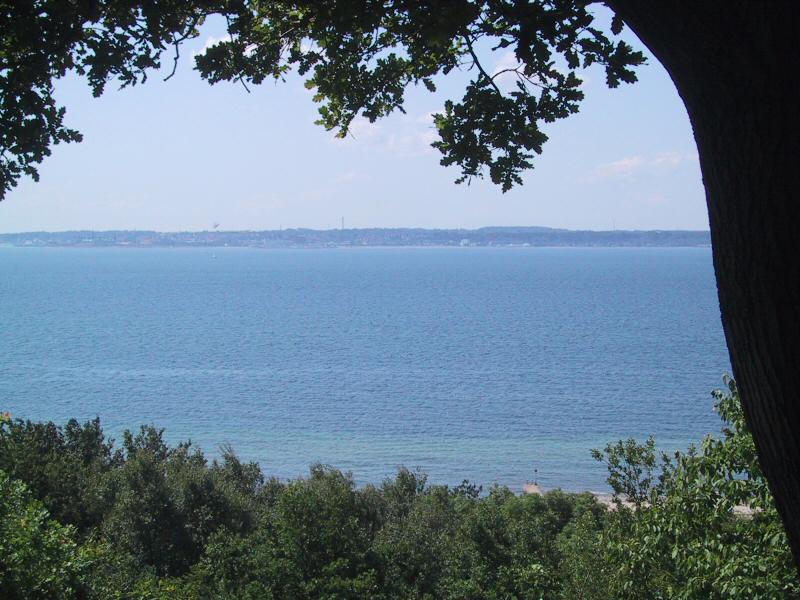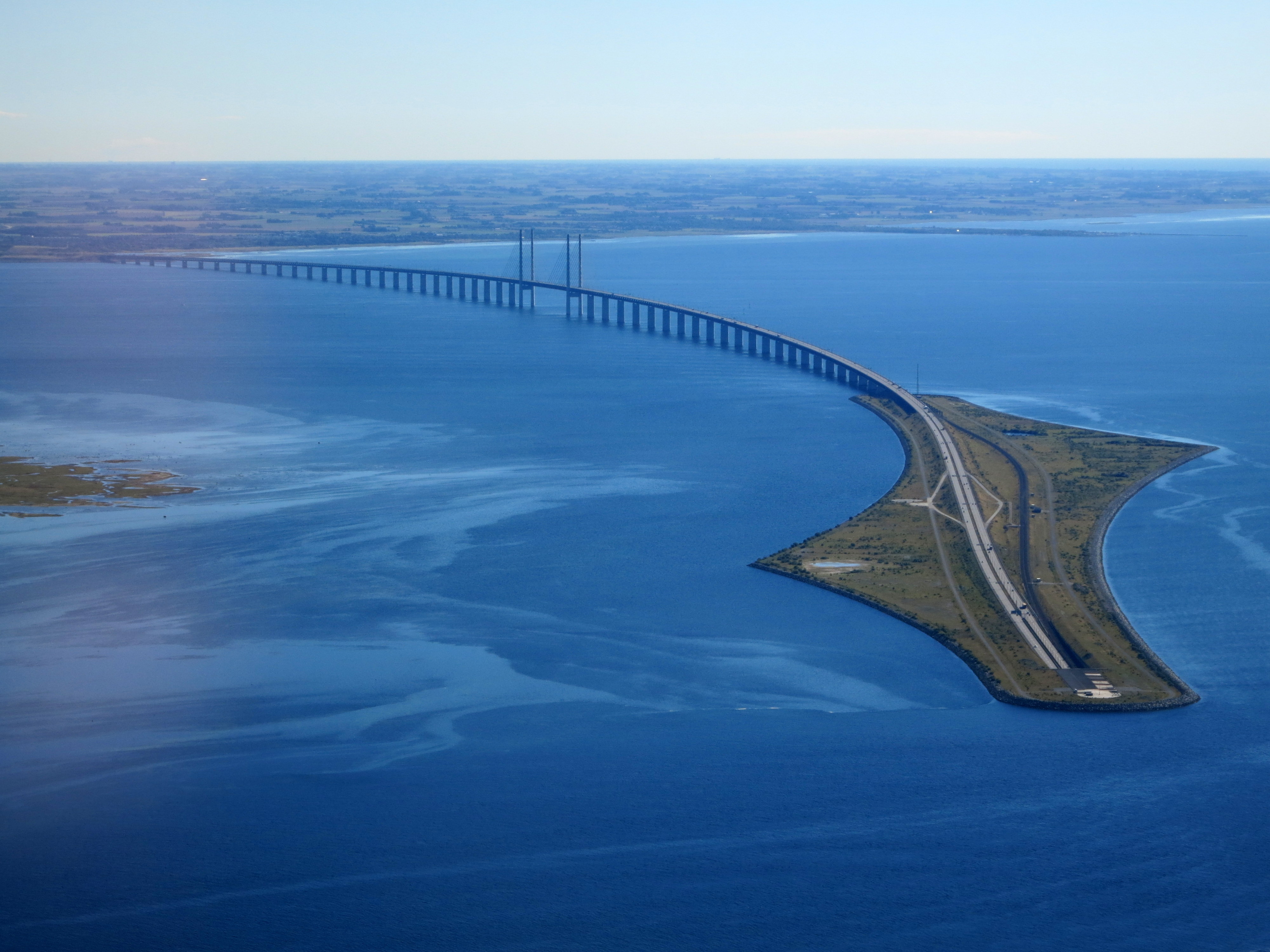Sound, The (Denmark and Sweden)
Enlarge text Shrink textØresund or Öresund (UK: , US: ; Danish: Øresund [ˈøːɐˌsɔnˀ]; Swedish: Öresund [œːrɛˈsɵnːd]), commonly known in English as the Sound, is a strait which forms the Danish–Swedish border, separating Zealand (Denmark) from Scania (Sweden). The strait has a length of 118 kilometres (73 mi); its width varies from 4 kilometres (2.5 mi) to 28 kilometres (17 mi). The narrowest point is between Helsingør in Denmark and Helsingborg in Sweden. Øresund, along with the Great Belt, the Little Belt and the Kiel Canal, is one of four waterways that connect the Baltic Sea to the Atlantic Ocean via Kattegat, Skagerrak, and the North Sea; this makes it one of the busiest waterways in the world. The Øresund Bridge, between the Danish capital Copenhagen and the Swedish city of Malmö, inaugurated on 1 July 2000, connects a bi-national metropolitan area with close to 4 million inhabitants. The HH Ferry route, between Helsingør, Denmark and Helsingborg, Sweden, in the northern part of Øresund, is one of the world's busiest international ferry routes, with more than 70 departures from each harbour per day. Øresund is a geologically young strait that formed 8,500–8,000 years ago as a result of rising sea levels. Previously, the Ancylus Lake, a fresh-water body occupying the Baltic basin, had been connected to the sea solely via the Great Belt. The incursion of salt water via Øresund marked the beginning of the modern Baltic Sea as a salt-water body.
Read more on Wikipedia >
 Place
Place









